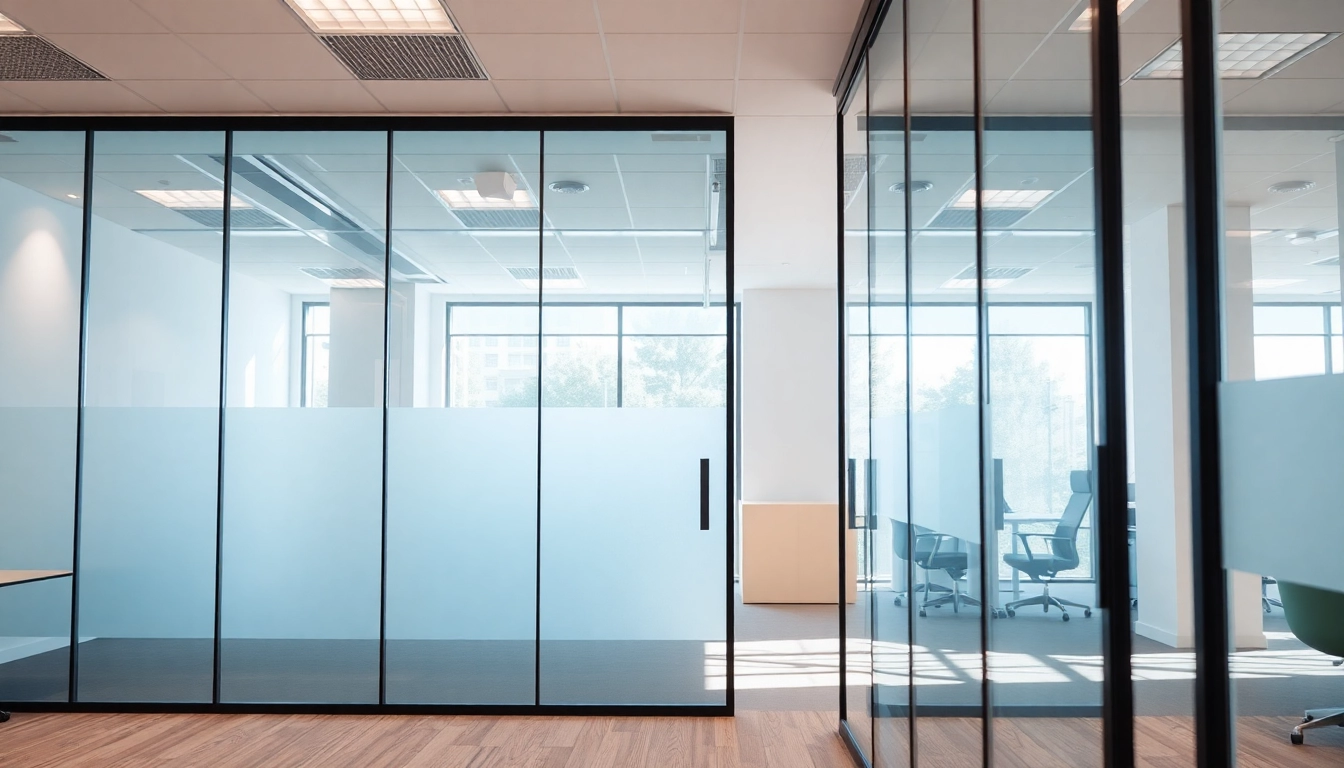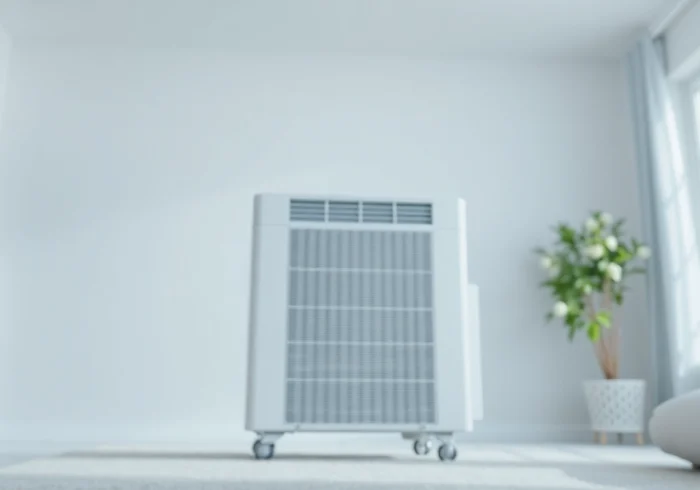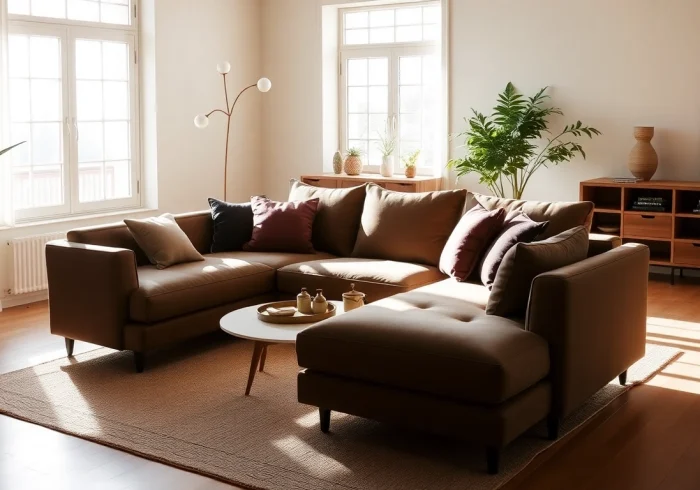Understanding Movable Glass Partitions
Definition and Purpose
Movable glass partitions are specialized wall systems designed to create flexible spaces while allowing light and visibility. Unlike traditional static walls, these partitions can be easily repositioned or removed to alter room configurations. Their primary purpose is to maximize the functionality of a space by providing an adaptable environment that caters to various needs—be it in office settings, retail spaces, or residential areas. These partitions blend aesthetics with practicality, enabling designers to achieve modern, open layouts without sacrificing soundproofing or privacy.
Benefits of Using Movable Glass Partitions
Integrating movable glass partitions into your design can transform how spaces are utilized. Here are some significant advantages:
- Flexibility: Movable glass partitions provide unparalleled flexibility in space management, allowing users to adapt their environment based on immediate needs.
- Natural Light: By using glass, these partitions enhance daylight availability in spaces, fostering a more welcoming and pleasant environment.
- Sound Control: Many glass partition systems are designed with acoustic properties that help in sound attenuation, making them ideal for areas where privacy is essential.
- Aesthetic Appeal: The sleek appearance of glass partitions contributes to modern design aesthetics, allowing for a seamless integration with existing decor.
- Cost-Effectiveness: While the initial investment may be higher than traditional partitions, the long-term savings related to energy efficiency and maintenance make them a cost-effective option.
Common Applications in Various Industries
Movable glass partitions find a wide array of applications across different industries:
- Corporate Offices: Used to create collaborative spaces or private meeting rooms without the need for permanent structures.
- Retail Environments: Designed for showcasing products while managing space for displays and customer interaction zones.
- Hospitality: Hotels benefit from these partitions by creating customizable venues for events and receptions.
- Healthcare: Hospitals and clinics utilize movable glass systems to facilitate patient privacy while promoting an open and airy atmosphere.
Types of Movable Glass Partitions
Frameless Glass Partition Systems
Frameless glass partition systems represent the pinnacle of modern design. These systems maximize light transmission and provide an unobstructed view, making spaces feel larger and more open. Since they lack bulky frames, they create a seamless transition between spaces while maintaining structural integrity. Frameless systems are prevalent in luxury office settings and upscale retail environments, where aesthetics are crucial.
Acoustic Glass Partitions for Sound Control
Not all glass partitions are created equal. Acoustic glass partitions integrate specialized technology that reduces sound transmission between spaces, making them perfect for environments that require confidentiality and noise control. These partitions typically feature double-glazing and sound-insulating materials, achieving Sound Transmission Class (STC) ratings that can comply with stringent standards. They’re often utilized in conference rooms, coworking spaces, and therapy offices.
Folding and Sliding Mechanisms Explained
Movable glass partitions can employ various mechanisms, including folding and sliding options:
- Folding Mechanisms: These allow multiple panels to fold away, creating wide openings that promote flow between spaces. They are often favored in multifunctional areas where versatility is essential.
- Sliding Mechanisms: Sliding glass partitions save floor space and offer a smooth operation. Ideal for smaller rooms, they can be used to quickly create or close off spaces as needed.
Design Considerations for Movable Glass Partitions
Choosing the Right Glass Type
When selecting glass for movable partitions, several factors come into play. Tempered glass, for example, is highly recommended for its strength and safety properties. Laminated glass provides additional sound insulation and UV protection, while frosted or etched varieties can offer privacy without sacrificing light. Choosing the appropriate glass type is critical not only for functionality but also for aligning with the design intent and organizational needs.
Frame and Hardware Options
Movable glass partitions come with various framing options, which can affect both durability and aesthetic appeal. Aluminum frames are lightweight and corrosion-resistant, while wood frames provide a warmer aesthetic. Additionally, the choice of hardware can influence the ease of operation, with options ranging from standard handles to sophisticated electronic mechanisms that allow for remote control.
Integration with Existing Designs
One of the significant benefits of movable glass partitions is their adaptability to existing spaces. Designers must ensure that the partitions integrate harmoniously with current architectural elements. Considerations might include aligning colors, textures, and finishes with the overall design framework. Collaborating with architects and interior designers during the planning stage can facilitate a cohesive final product.
Installation and Maintenance of Movable Glass Partitions
Professional vs. DIY Installation
While some may consider a DIY approach to installing movable glass partitions, this is typically not recommended due to the complexity involved. Professional installation ensures that the partitions are correctly aligned, functional, and securely mounted, minimizing the risk of future issues. Technicians can also provide insights into optimizing the partition’s performance, such as ensuring the right acoustics and ease of movement.
Regular Maintenance Tips for Longevity
To ensure the longevity of movable glass partitions, regular maintenance is essential. Here are some best practices:
- Cleaning: Regularly clean glass surfaces with appropriate cleaning solutions to prevent buildup and maintain clarity.
- Hardware Checks: Periodically inspect tracks, rollers, and hinges to ensure smooth operation and address any wear-and-tear issues proactively.
- Sealing and Inspections: Check seals around glass edges to prevent air and moisture infiltration, which can affect insulation properties.
Common Challenges and Solutions
Implementing movable glass partitions can present challenges such as structural weight considerations, acoustic performance expectations, or integration with existing building systems. Solutions often reside in expert consultation. For example, implementing soundproofing membranes, adjusting the structure to support additional weight, or utilizing tracks that can efficiently handle sliding mechanisms are common ways to overcome these hurdles.
Enhancing Space with Movable Glass Partitions
Case Studies of Successful Implementations
Success stories abound in the case of companies that have effectively integrated movable glass partitions:
- Corporate Office Scenario: A tech company deployed movable glass partitions to create a pop-up collaboration space in their open office layout. The partitions allowed spontaneous meetings without disrupting nearby employees, enhancing productivity.
- Retail Transformation: A high-end retailer used acoustic glass partitions to create tailored fitting rooms while preserving an open shopping experience, increasing sales by improving customer service.
Cost-Effectiveness and ROI Analysis
Investing in movable glass partitions should be viewed through the lens of overall value. Although the upfront costs may seem high, the potential for enhanced productivity, increased space usability, and energy efficiency can lead to significant long-term savings. When considering ROI, factors such as reduced heating and cooling costs due to improved daylighting and flexibility should be weighed.
Future Trends in Glass Partition Technology
The future of movable glass partitions looks promising with ongoing advancements in technology. Smart glass options that adjust transparency based on the time of day or the lighting conditions, as well as systems designed for sustainable energy use, are gaining traction. Furthermore, the integration of digital technologies into movable partition mechanisms will enhance user interaction and customization, catering to evolving spatial needs.


